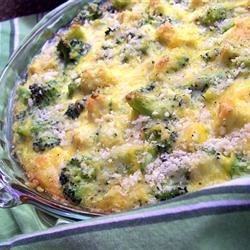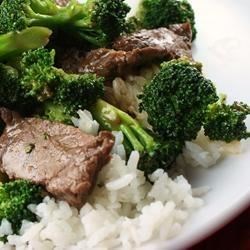Farm Update
 |
| The guys have harvested the garlic, and now it is drying and getting ready to go in the shares in a few weeks. |
Hi everyone! This last week has been pretty wet, and it looks like the summer might be cooler and wetter than
usual. With it comes to how the crops fare in weather like this, some do better and some do worse. Our weed
pressure has been very intense and Fred and the guys were finally able to make a
lot of progress at taking them down. We also have turned under a lot of old
plantings, and will be replanting large fall plantings here in a couple weeks. The
blueberries are doing very well, and because of all the pruning Fred did during the winter and also because of all the rain, they are a lot bigger than in past years. The leaf and stem growth on
the bushes that produces next year’s crop is also very large already, so our
2015 blueberry crop should be quite the bumper crop, especially with our new well. Our broccoli, beets, and our cabbage have
been doing great as well, as this type of weather is really good for them. The potatoes have struggled a little with
disease and insects and probably would have done better with a dryer year. Our tomatoes are looking healthy but the crop
will come a little later than usual, probably more similar to last year. The peppers are not doing well because they really
do need more hot days to thrive. So far the beans are looking good and should
be plentiful in the next week or two, as long as there are no disease issues.
The pigs have really had a good time, and have enjoyed the wet weather that
brings tasty night crawlers and frogs.
They are also an animal that thrives much better with the cooler
temperatures. In general the cooler
weather has been more of a benefit than a detriment, but it would be good to have a few dryer days in the mix as well to help deter weeds and plant diseases.
What to Expect in This Week's Share
 |
| Our dog, Josie, goes out to visit her piggy frenemies, with whom she will have a love/hate thing going on until October, when the pigs will go on to the great beyond (and into our freezer). |
- Choice of beets, fennel, or gold turnips
- Choice of carrots and either cucumbers or summer quash (out of the cucumbers and squash, we're not sure which one we're going to have yet)
- Choice of potatoes or blueberries
- Choice of broccoli or salad mix
- Choice of kale, chard, or cabbage
- Choice of leeks or frisée
- Choice of onion or basil
Veggie Spotlight: Broccoli
Both this season and last season have been great years on
the farm for our broccoli, as field conditions have been more ideal than usual. Broccoli really is a cool weather crop that
benefits greatly from a lot soil moisture, especially around the time the heads
start to develop.
 |
| It is suspected that early broccoli probably looked more like this broccolini than the broccoli we eat today. |
The historical beginnings of broccoli were more similar to the
broccoli raab or broccolini that you may have seen in better
restaurants, or every now and then at grocery stores with great produce sections.
The first cultivated broccoli was probably first grown by the Etruscans
by the 5th century BC (a more exact date is hard to track down
due to the lack of written history from this group of people) who inhabited a
region in the Italian peninsula. As the
Romans overtook and absorbed this group of people they also inherited the
broccoli and continued its development. Broccoli was not very widespread in cultivation in the rest of Europe until
later in the 17th and 18th centuries. Part of this is likely due to the lack of
adaptability and low edible yield of the earlier broccolis. Italian
immigrants in the 18th century eventually brought the more modern broccoli to the United States. After it arrived in the states, the breeding work
on broccoli has vastly improved this crop in yield, adaptability to other growing
regions, and better palatability. Over the
course of the 20th century, broccoli made an extremely rapid rise in
popularity and is now considered one of the more important common vegetables.
 |
| Ancient broccoli may also have looked more like this broccoli raab than modern broccoli. |
Broccoli is popular for good reason. Besides being a delicious vegetable, it is
also one of the healthiest as well, and is considered a superfood. With as much calcium as milk per ounce it is
also an excellent source of vitamin A among many other nutrients, and may also help fight cancer. The chemical
sulforaphane (also found in cabbage and kale) turns on genes that fight cancer
and turn off ones that may let it increase. However, the anticancer properties
are not fully understood and it is likely that more substances are involved than
just sulforaphane. Interestingly, studies
showing that people with regular broccoli intake are less prone to cancer also
show that people who smoke and also eat broccoli do not have any added protection.
For the last two years, the broccoli on our farm has been doing very
well because the seasons have been relatively cool with adequate rainfall. We also made changes to our soil fertility and seed variety after our first year’s crop was disappointing. The variety we grow is called Gypsy, which is
very well adapted to our climate and has the ability to produce large heads. We start all our broccoli in the greenhouse, where we seed flats of
transplants and wait until they are 4-5 weeks old before transplanting them out in
the field in black plastic. As the season progresses, we
usually start planting into bare soil, as the need to protect the leaves from soil splash during the cool wet weather of spring diminishes. This is because as
we get into the summer the conditions naturally become dryer and warmer, lowering the chance of disease. From there we let it grow until the heads are
at a maximum size before flowering, and then we harvest them. So when you eat your delicious and good-for-you broccoli this week, you can do it with the knowledge that several months of work at the farm, and several thousand years of chance and choice have gone into putting it on your plate. Enjoy!
Recipes
 |
| Broccoli Chicken Divan |
 |
| Restaurant Style Beef and Broccoli |
Check out this recipe for Broccoli Chicken Divan, which is (mostly) good-for-you comfort food at its best. Or if you are in the mood for Chinese food, try this Restaurant Style Beef and Broccoli.

No comments:
Post a Comment